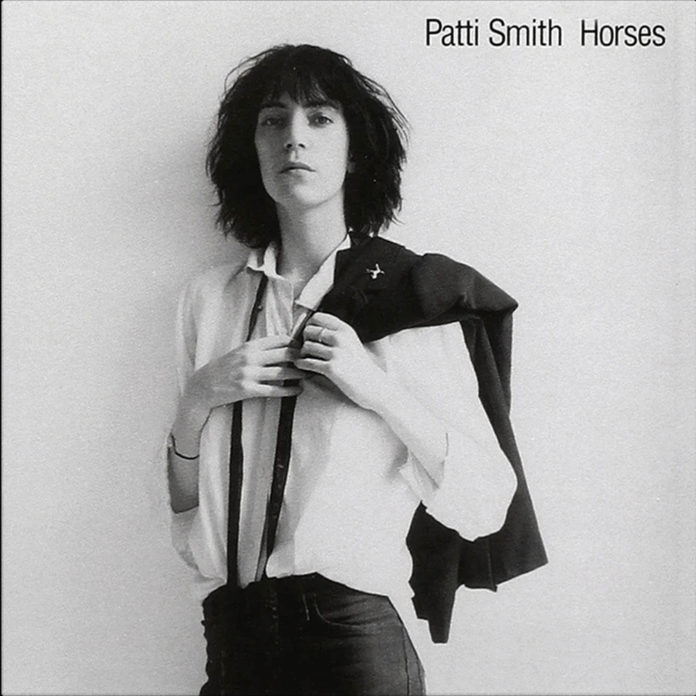Patti Smith’s Horses is often hailed as one of the most revolutionary rock albums of all time, celebrated for merging poetry with punk in a way that captivated both critics and fans. Released on November 10, 1975, the album was Smith’s debut, a bold statement in the rock world that continues to resonate nearly fifty years later. Here are five fascinating insights about Horses that reveal the album’s creative spirit and complex legacy.
1. The Album’s Release Date Was “Magically” Delayed
Originally, Horses was set for release on October 20, Arthur Rimbaud’s birthday—a date that held significance for Smith, who deeply admired the French poet. However, due to a vinyl shortage, the release was postponed to November 10, the anniversary of Rimbaud’s death. Smith saw this as a “magical coincidence,” adding a haunting layer of tribute to Rimbaud and further tying the album to her artistic influences. For Smith, this delay made the album’s release even more meaningful, aligning it with a poetic end rather than a beginning.
2. An Attempt at Strings That Smith Vehemently Opposed
John Cale, who produced Horses, initially envisioned adding string arrangements to give the album a more polished, layered sound. However, Smith was adamantly against this idea, preferring a raw, unfiltered approach that captured the energy of her live performances. Smith’s rejection of the strings created some tension with Cale but ultimately kept the album’s minimalist punk ethos intact. This decision reinforced Smith’s vision of Horses as a revolutionary break from the polished music dominating the airwaves at the time.
3. A Tense Collaboration with Rock Icons Led to a Physical Altercation
The recording of Horses wasn’t without its drama. During the sessions, Smith’s boyfriend, Allen Lanier of Blue Öyster Cult, and her ex-boyfriend, Tom Verlaine of Television, clashed over creative differences. The tension escalated to the point where Lanier and Verlaine ended up in a physical altercation on the final day of recording. This event added to the already charged atmosphere, showing how personal and professional relationships often collided in the making of Horses.
4. Patti Smith’s Outfit: A Thrifted Look That Defied Gender Norms
The iconic cover photo of Horses, taken by Smith’s close friend Robert Mapplethorpe, portrays her in an androgynous pose that defied 1970s conventions for female artists. Smith wore a simple white shirt from a Salvation Army shop and an old black jacket that she slung over her shoulder. The look was partly inspired by French poet Charles Baudelaire, as well as Frank Sinatra. Smith’s unorthodox fashion choice, which eschewed the glamorous image typical of female rock stars, became a revolutionary statement, challenging gender norms in rock and roll.
5. Recorded as a Tribute on Hendrix’s Death Anniversary
Smith recorded the song “Elegie” on September 18, 1975, exactly five years after Jimi Hendrix’s death. Dedicated to Hendrix and other rock icons who had passed away, the song was intended as a requiem for those who, like Hendrix, had shaped the music of the 1960s but didn’t live to see its evolution. This small but poignant tribute connects Horses to the history of rock in a heartfelt way, making it not only a groundbreaking punk album but also a commemoration of rock legends lost too soon.
Horses is more than just an album; it’s a cultural artifact steeped in history, emotion, and boundary-pushing artistry. The stories behind Horses reveal why it’s celebrated as both a punk rock milestone and an enduring work of poetic expression that speaks to those who march to the beat of their own drum.


